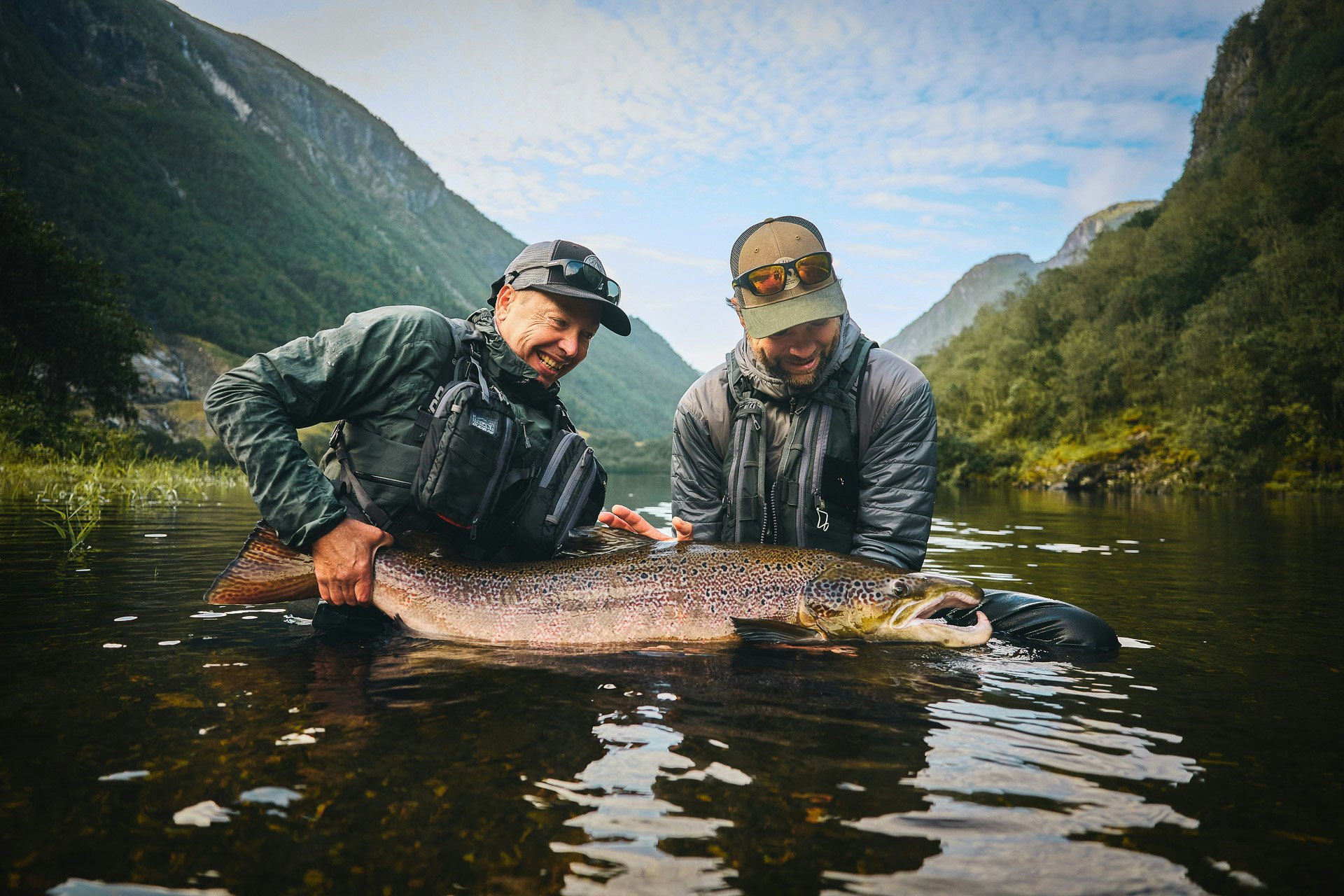
A fish of a lifetime
When at last the salmon came within reach, Tellis Katsogiannos, Guideline’s Product Developer, was there with the net. It slid in cleanly. The river fell silent, broken only by the explosion of happiness from Thomas and the crew sharing the moment with him. In the mesh lay a 40lb male, bronze-backed and hook-jawed—an old crocodile of a salmon. Thomas would later say: “It is the fish of a lifetime and a true privilege to hold and release it in the company of my friends and colleagues. They still exist and overcome all the problems and difficulties. It brings me hope.” Together with Espen Myhre, Thomas cradled the fish in the current. The bronze giant heaved, pulsed with power, and then slid from their hands back into the depths, once more to pass on its precious genetics for a brighter future for wild salmon stocks.
When Giants Were Common
Across Norway in 2024, managers faced the brutal arithmetic of low returns and poor early-season counts. Thirty-three rivers—from Trøndelag south to the Swedish border—were closed outright in late June, with strict rules tightened elsewhere. The signal was clear: if spawning targets aren’t going to be met, the only ethical choice is to step back. Those calls were grounded in the latest national assessments. Norway’s scientific advisory committee reported that the “harvestable surplus” hit a record low in 2024, prompting unprecedented restrictions in rivers and remaining sea fisheries. The biggest recurring pressures they flagged are salmon farming impacts (sea-lice spillover, escapes, and disease) and a warming, less predictable ocean climate.
However, there was a time when salmon were abundant and fish like this were not so rare. Old photos from many Scandinavian rivers, including hidden treasures like this little river along Norway's West Coast, show men standing stiffly beside salmon as long as themselves, strung from poles or laid on the grass. In those days, stories of 40–50lb salmon weren’t whispers but expectations. The giants were the pride of rivers, the proof of abundance. Today, their presence is far thinner. Every one caught—and safely released—feels like a glimpse into the past, a reminder of what these rivers once carried and what, with care, they still might carry again.
Giants & Hope
The river from above
The moment of truth
Cornerstone of the species
A big salmon is more than just a trophy. Biologically, it is a cornerstone of the species’ survival. The biggest fish in the river are also the most valuable due to their genetic resilience and spawning power. Large salmon carry proven survival genetics: they have endured years in the ocean, evaded predators, nets, and parasites, and returned with the strength to spawn. By reproducing, they pass on traits of resilience that future generations desperately need.
Big males dominate on the redds. Their sheer size and strength allow them to fertilize more eggs and defend their territory. Big females are even more critical—capable of laying many times more eggs than smaller hens, and digging deeper into better spawning grounds. Beyond biology, large salmon anchor our connection to the rivers. They remind us of what these waters are capable of producing. Their presence is both a conservation benchmark and a source of hope. In other words, releasing a giant is not just an act of sportsmanship. It is a direct investment in the river’s future. Every big salmon that swims away carries within it not just the power of its own life, but the possibility of countless others.
Catch & Release: From Controversy to Culture
Amidst these pressures, one of the clearest tools for protecting wild stocks has been the adoption of catch and release. Once a controversial idea, it is now woven into the culture of many rivers. On legendary systems like the Gaula and the Orkla, voluntary and mandatory C&R rates now exceed 90%. This transformation did not happen overnight. It was the product of science, regulation, and a shift in angler values—toward the idea that the opportunity to encounter a salmon is often reward enough. Studies have shown that, when done properly, survival rates for released Atlantic salmon are high. But “properly” is the key word. A salmon released poorly is a salmon lost, and with today’s fragile stocks, every fish counts.
These are the Best Practice Guidelines for C&R. Education is as vital as enforcement:
• Use appropriate tackle: Fish with rods, lines, and leaders strong enough to bring salmon in quickly. Long battles deplete energy reserves and lower survival chances.
• Keep fish wet: Avoid beaching fish or dragging them onto rocks. The best photos are often taken with the salmon partially submerged.
• Limit air exposure: If a fish must be lifted, keep it short and return it immediately.
• Gentle handling: Wet hands and rubber nets prevent unnecessary damage to scales and slime.
• Recovery time: Hold fish facing upstream in steady current until it kicks away under its own power.
• Mind the conditions: High water temperatures (>18–20°C) significantly reduce post-release survival. In such periods, consider refraining from fishing altogether.
The right gear for the giants

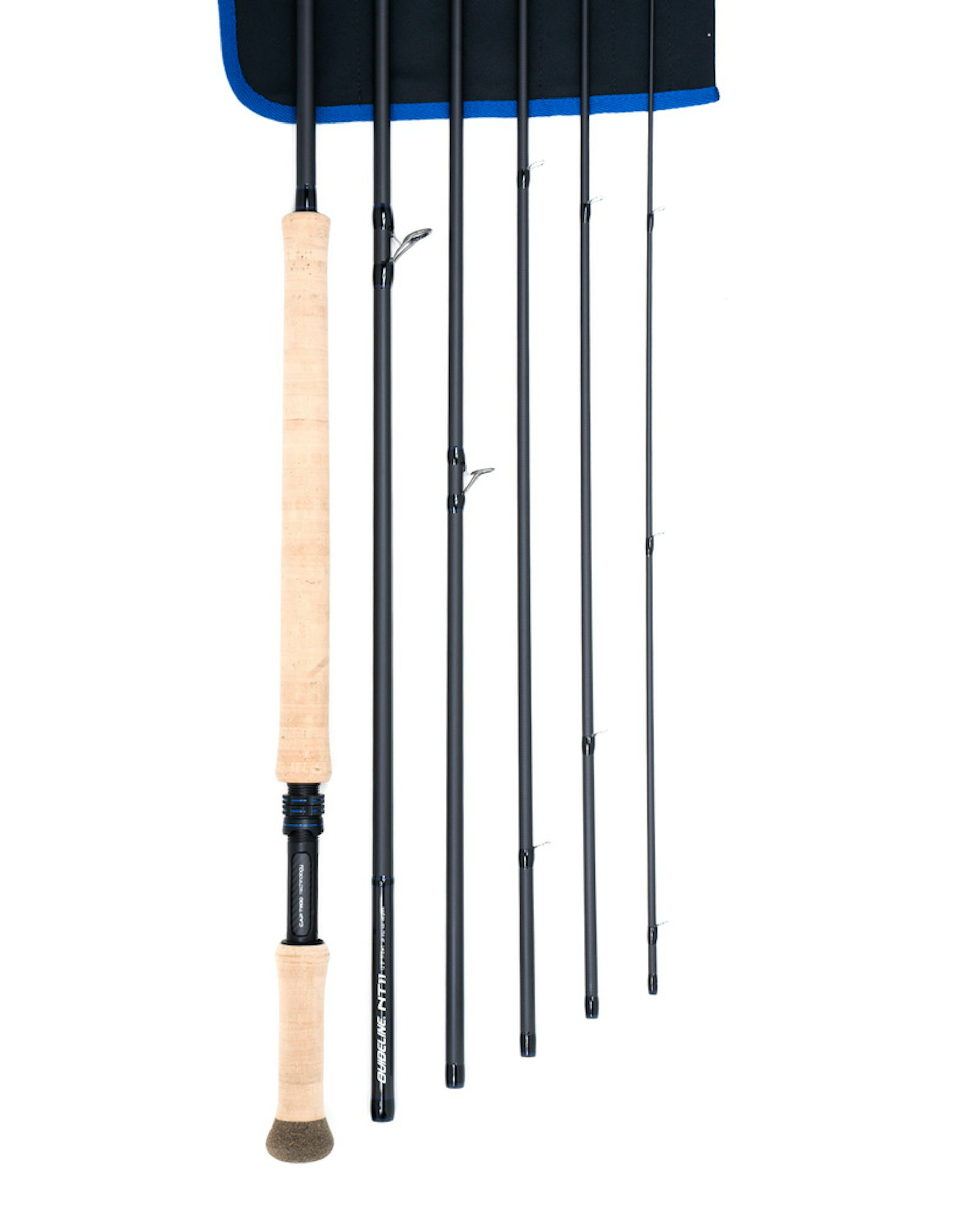
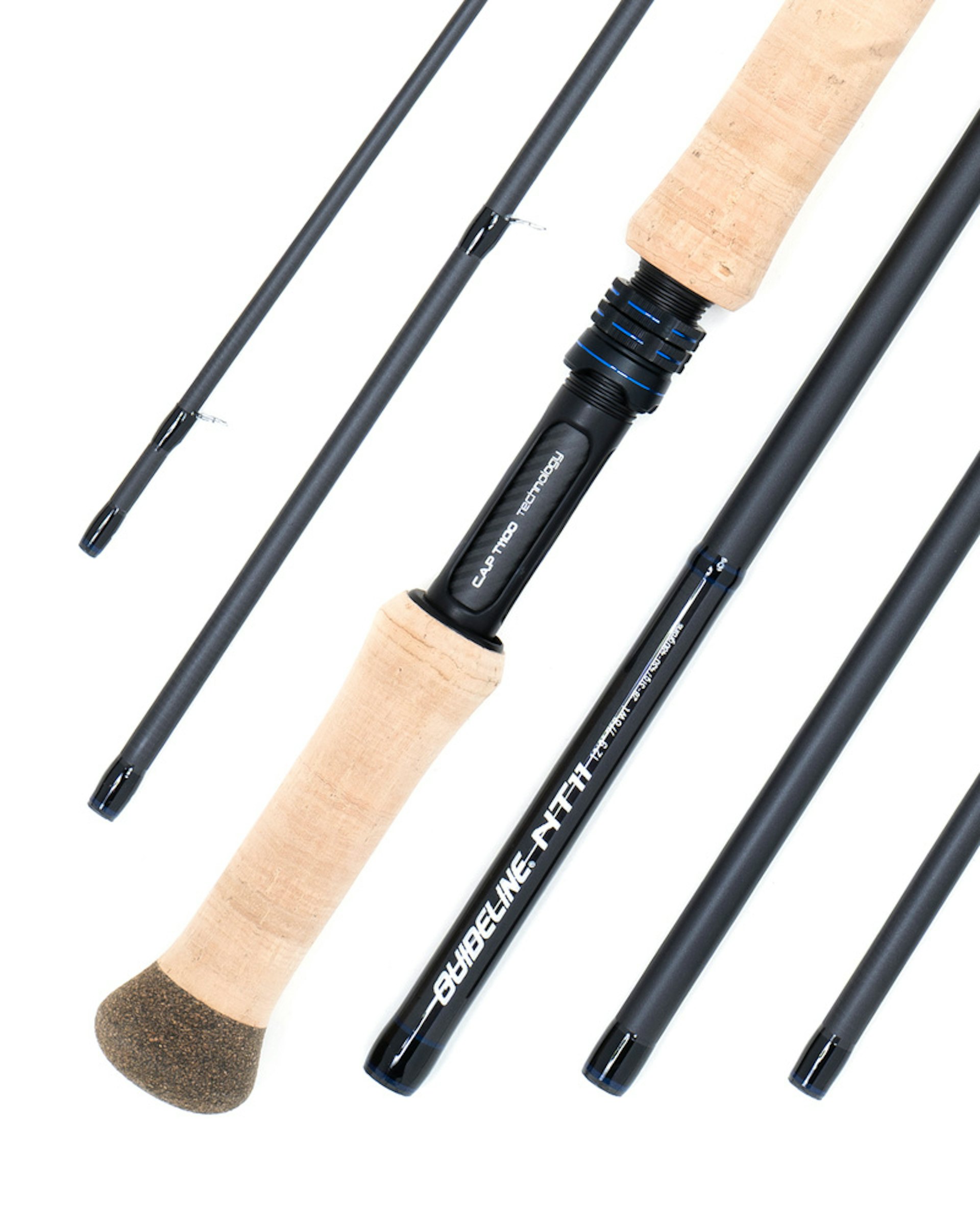
NT11 6-piece double handers featuring the latest in technology in a travel friendly package without sacrificing any performance. Taking the scandi style fishing to the next level.
Read moreNT11 6-PC
929.99 USD

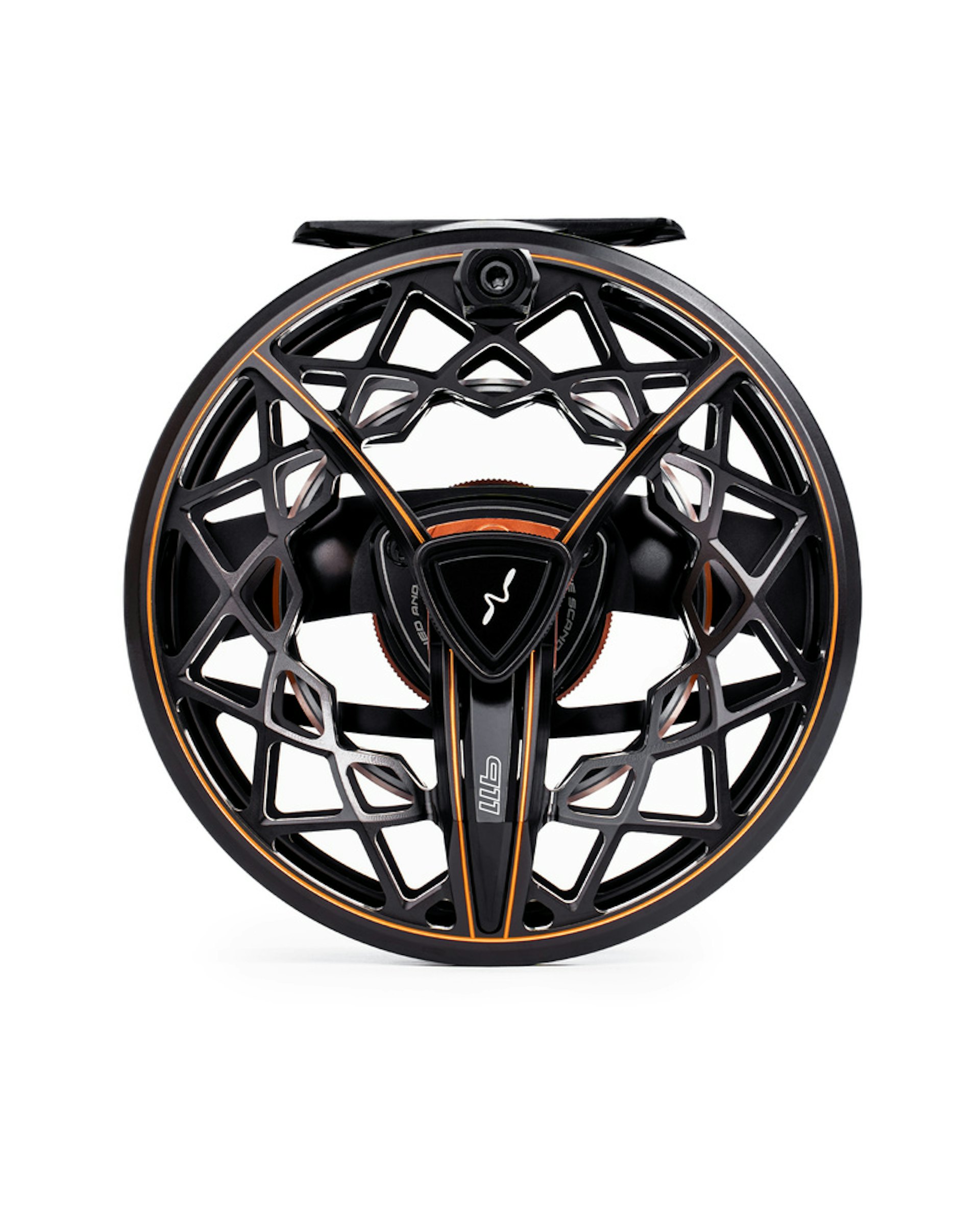
The Guideline Scandi fly reels are precision-engineered for modern migratory fly fishing, featuring high-torque titanium drag systems, deep large-arbour spools, and ultra-smooth braking performance. Designed in Scandinavia and built for power, balance, and control in every fight.
Read moreScandi - Black/Bronze
629.99 USD
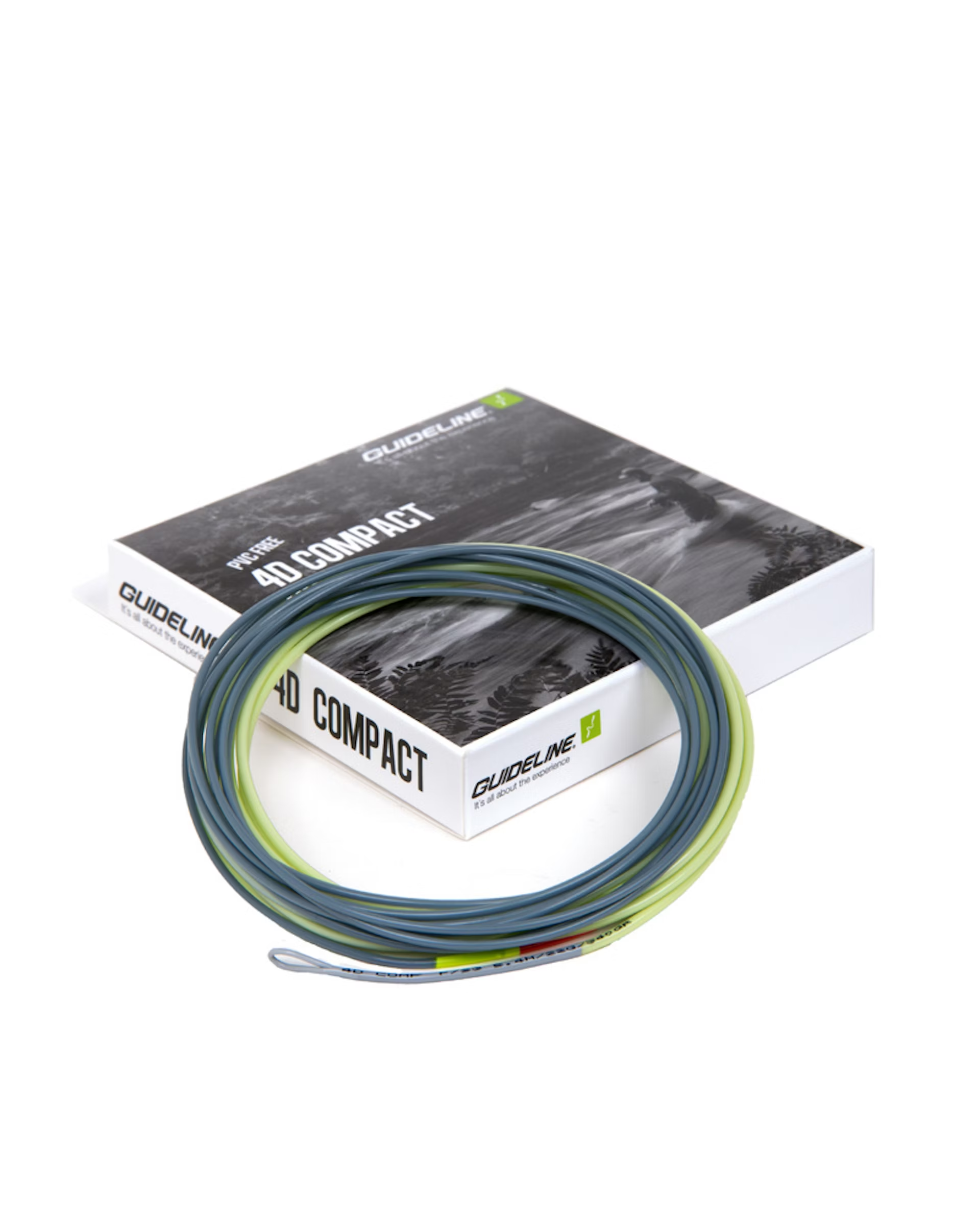
Guideline 4D Compact are short, powerful and well-balanced bodies developed to work perfectly together with 4D Compact Tips.
Read more4D Compact Body
94.99 USD
The Weight of Hope
It is easy to despair when you know the numbers, when you hear the biologists and river managers talk of declines and percentages. But hope often comes in the shape of a fish. A 40-pounder is more than a fish. It is a survivor—proof that resilience still exists, that giants still slip between currents, that rivers still have more to give if we let them. The old days when every season produced many such fish may be gone—but not entirely.
They remain, fewer and harder to find, but still there. And each one returned is more than just a memory for the angler—it is a seed for the future. On that Scandinavian river, in the company of colleagues and friends, one such giant returned to carry its story forward. For those who were there, and for those who still dream of salmon, it was a reminder: the river still breathes, the giants still run, and hope still swims.
The tackle of choice
Rod: NT11 13´9" Double Hand rod
Reel: Vosso 911 with 250 m of 30lb backing.
Line: 4D Compact F/3 body with a 12´ S5/S7 tip
Fly: TD Black Knight tube fly
